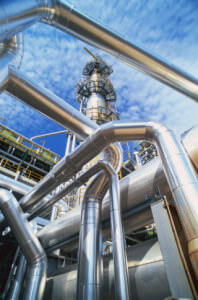Improving Gas Stability with Cylinder Technology
It’s essential to achieve gas stability within a cylinder so that the composition of the gas or gas mixture will remain within the defined, acceptable limits for a designated period of time, even prolonged storage. We will review improving gas stability with cylinder technology in-depth below.
 Meeting this goal isn’t always easy, as many factors can affect the stability of gases within cylinders. Some of these factors include the reactions that occur within the gases themselves, the pressure within the cylinders, the length of the storage time, temperature variations, and chemical reactions with the metallic cylinder interiors.
Meeting this goal isn’t always easy, as many factors can affect the stability of gases within cylinders. Some of these factors include the reactions that occur within the gases themselves, the pressure within the cylinders, the length of the storage time, temperature variations, and chemical reactions with the metallic cylinder interiors.
The long-term stability of reactive gases can be problematic due to the concentration of the gas molecules as well as the molecules inside the cylinder. This can occur through chemical reaction, adsorption, and phase change.
It’s even more challenging to prevent reactions within small-volume cylinders due to the greater ratio of internal surface area to internal volume.
And as gas combinations became more complex with multiple components, such as high-purity, ultra-high purity, and research-grade specialty gases certified to purity levels of 99.999% or higher, maintaining stability became more difficult.
Aluminum Cylinders vs. Steel Cylinders
Conventional steel cylinders are typically the most popular choice, but aluminum cylinders became popular for portable gas containment, as this material is lighter in weight. However, gas companies also found that the gas stability with a variety of reactive gases was better in the aluminum cylinders than in steel cylinders.
Specialty Gas Applications
There are many specialty gas applications that utilize aluminum cylinders such as electronics manufacturing, including semiconductor production that requires high-purity nitrogen (N2) and arsine (AsH3), as well as a variety of custom-formulated gases.
Medical markets also use aluminum cylinders for medical gases in biotechnology and biopharmacology for research and laboratory gases as well as high-purity and ultra-high purity therapeutic gases and gas blends.
Chemical and refining processes such as research and laboratory gases used for testing also use aluminum cylinders.
Enhancing Stability with Cylinder Technology
To enhance specialty gas stability, companies are coming up with techniques that minimize active sites or catalytic surfaces within the cylinders. Some of the most common techniques include the following:
- Inspecting cylinders through a visual examination. If it doesn’t show signs of visible contamination, it’s passed through.
- Vacuum checks are performed to ensure that the cylinder is free of moisture caused by surface films.
- Washing the interior of the cylinder by agitation with a mild detergent and rising with de-ionized water.
- Polishing the interior mechanically or chemically can replace washing.
- Putting a cylinder in an oven for eight hours at temperatures between 100°F and 150°F will remove moisture and contaminants from moisture. This is referred to as baking out. During this process, you can also repeatedly purge the cylinder with an ultra-high purity inert gas like ultra-dry nitrogen with a dew point of -130°F. Then pulling a vacuum.
By understanding these tips and considering these methods, you may be successful in achieving gas stability within your cylinders.
For information about CPV Manufacturing and their products, contact us.
